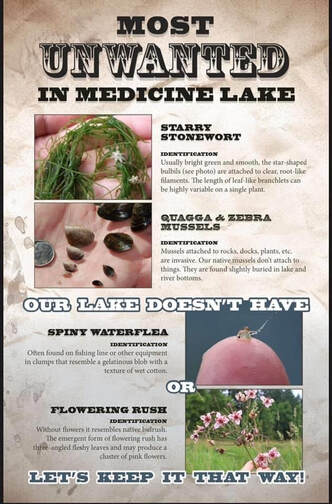The West Metro Water Alliance (WMWA) is a partnership of four watershed commissions that combine our education and outreach efforts: Bassett Creek, Elm Creek, Shingle Creek and West Mississippi. Together we work to educate residents, businesses, and institutions within our watersheds about protecting and improving water quality of our lakes, rivers and streams, and protecting our water management infrastructure (e.g. storm water runoff systems).
WMWA shares current videos, updates, and links on our Facebook page. Visit us and "like" us on Facebook to see our latest posts.
We're hiring an Educator. See our job posting.
WMWA shares current videos, updates, and links on our Facebook page. Visit us and "like" us on Facebook to see our latest posts.
We're hiring an Educator. See our job posting.

Attention 4th Grade teachers, students and parents!
WMWA's Watershed PREP class is a FREE, one hour long, in-school fourth-grade elementary school program. To request an educator visit, or learn more, click here. |
WMWA Partner Programs

Adopt-a-drain Program
Sign-up to adopt a storm drain in their neighborhood and keep it clear of leaves, grass clippings, trash, and debris. This improves water quality. It takes approximately 15 minutes, twice a month. Adopting a drain makes a big difference! |
|
Salt Smart
As de-icing practices increase with new development, Twin Cities' waterways are increasingly at risk for chloride impairment. High levels of chloride harm native vegetation and wildlife, and can impair ecological services such as lake turn over in Spring and Autumn. More on lake turn over here. |
|
Lawns to Legumes Program
Assistance and grants available for residents! This program aims to protect the federally endangered state bee, the Rusty Patched Bumblebee, and other pollinators. Even small plantings of native flowers build and connect habitat corridors that help pollinators. |
Blue Thumb coordinates the “Individual Support” portion of this program with cost-share funding (grants up to $350 per resident), workshops, landowner coaching, and site visits. The MN Board of Water and Soil Resources (BWSR) is the lead agency for the lawns to legumes program, and also offers neighborhood grants. BWSR also has a pollinator toolbox designed for professionals, and residents may find their plant and seed selector useful. |
|
Native Plant Gardens
Native plants:
Pollinators are responsible for pollinating 1/3 of the food we eat. |
Visit Blue Thumb's Plant Finder to see what plants will grow well in your garden, yard or shoreline To find native plants for purchase, visit MN DNR's list of nurseries, suppliers, and landscapers for Central Minnesota. This list also includes services that can remove invasive species. Video "How Nature Makes Clean Water" 4-minute video by The Nature Conservancy shows how nature filters water. |
|
Volunteer to become a Minnesota Water Steward
The Minnesota Water Steward program educates and certifies volunteers to be community leaders in protecting and improving water quality in local waterways. The program is a partnership between Freshwater and participating cities, counties, watershed management organizations and non-profits (see a list of participating organizations here). |
|
Volunteer to Monitor Water Quality
Local watersheds need volunteers to monitor local lakes, streams and wetlands. Watersheds partner with: - Stream Health Evaluation Program (SHEP), and with - Metropolitan Council for the Citizen Assisted Monitoring Program (CAMP) for lakes. High School students can also volunteer through their school as part of the RiverWatch Program sponsored by Hennepin County. State-wide opportunites available at MN PCA's website. If you are interested, please complete the contact form and note in the comments that you are interested in volunteering. |
|
Beware Aquatic Invasive Species! Spread the word!
Invasives destroy local ecosystems. They're easily spread accidentally. They need expensive long-term management once introduced. Clean In, Clean Out Clean your watercraft. Drain all water, Dispose unused bait. Protect MN waters by following state aquatic invasive species laws. For example: 20 days dry or pressure wash. No plant fragments, Etc. Report suspected new infestations to DNR. Contact your specialist. Volunteer for an AIS detection training with the U's Minnesota Aquatic Invasive Species Research Center (MAISRC). AIS dectectors help DNR and other agencies find new infestations and keep an eye on management of existing AIS. Reach out to fellow water recreation participants to help them understand and respect AIS rules. AIS are usually not fully removable once introduced. They require expensive long-term management once they are introduced. |
Watershed Overview

What watershed do I live in?
To find your watershed:
- Visit the Natural Resource Links of the Hennepin County Property Portal
- Enter your address
- Click on "+ Watershed Present" at the bottom of the left-hand navigation frame
What is a Watershed?
Watershed Overview
Watershed On-line Class from Wolf Ridge Environmental Learning Center
To find your watershed:
- Visit the Natural Resource Links of the Hennepin County Property Portal
- Enter your address
- Click on "+ Watershed Present" at the bottom of the left-hand navigation frame
What is a Watershed?
Watershed Overview
Watershed On-line Class from Wolf Ridge Environmental Learning Center
West Metro Water Alliance
Our partners include the Bassett Creek, Elm Creek, Shingle Creek, and West Mississippi Watershed Management Organizations, Hennepin County, Three Rivers Park District, Freshwater Society, and Blue Thumb. Learn more
Email WMWA at [email protected]













